Fisheye lenses in photography are dependent purely on your need for the most mega wide view of the world.
Like all things, this lens is simply a tool and when applied to the right situation can produce truly incredible images. Whether you’ve been immersed in photography for a long period of time or just starting out and curious to know the wide range of optics available to stylise your photography, the fish eye lens may be just the thing you’re looking for.

In order to spice up photography output and creative direction, many photographers choose to change tack, one of the ways in which they do so is by switching upon their use of lenses to introduce a new viewpoint, or to force a change in style to kickstart creativity.
One of the lenses that can help you achieve an exciting view of objects and images is the fisheye lens. In contrast to wide-angle lenses, this lens offers an ultra-wide, wraparound view.
Many look down on fisheye lenses merely as toys to help photographers and videographers indulge in creating different images purely for the sake of being different without any real utility. In the 90’s the fisheye lens became a staple in the skateboarding world and became synonymous with everything around skating and skate culture. Admittedly it has never really broken free from this association, such was the importance of its use in the skate counter culture scene. Opinion is divided around fish eye lenses, but they do have many uses, and depending on your needs or ability to use it creatively, may be a worthwhile investment.
Historical Background of the Fisheye Lens
The tag “fisheye” was coined in order to show how a fish has a super-wide hemispherical view from beneath the water. Robert W. Wood first made use of this term in 1906.
Its first practical application was not until 1920 when meteorological scientists observed cloud formations in the sky. At the time, they were called “whole sky lenses”.
Also used in aviation, astronomy and of course, skateboarding videos, most people will have encountered a fisheye lens in a simple door ‘peephole’. The ultrawide view allows you to see who’s come knocking!
The photographic use of fisheye lenses did not commence until the 1960s, as mass production of the fisheye lenses commenced.
What is a fisheye lens?
A Fisheye Lens is an angle lens that produces a visually distorted effect which creates an ultra-wide panoramic view.
Put simply – it makes straight lines appear curved, so curved in fact that it can create an image that is a complete circle. It is popularly used for underwater videos and images, extreme sports, and astrophotography.
Fisheye lenses were originally created to help meteorologists analyse and observe the ever-changing weather. Over time, creative photographers began to use it to create desired effects in their work.
Regular wide-angle lenses possess a rectilinear outlook that minimizes distortion. In contrast, the curvilinear nature created by the panoramic fisheye lens creates extreme visual distortion.
Different fisheye lenses distort images differently. The way the images are distorted is known as their mapping function.
Types of Fisheye Lens
There are two types of fisheye lenses available. Let’s take a look at them: They are diagonal fisheye lens and circular fisheye lens.
First – have you ever looked at a lens and thought “if the lens glass is a circle, then why does the image come out as a rectangle?”
It’s because all lenses create an image circle, so your original thought is right, the circular piece of glass does create a circular image.
This circle is then projected onto the camera sensor or piece of film, like this.
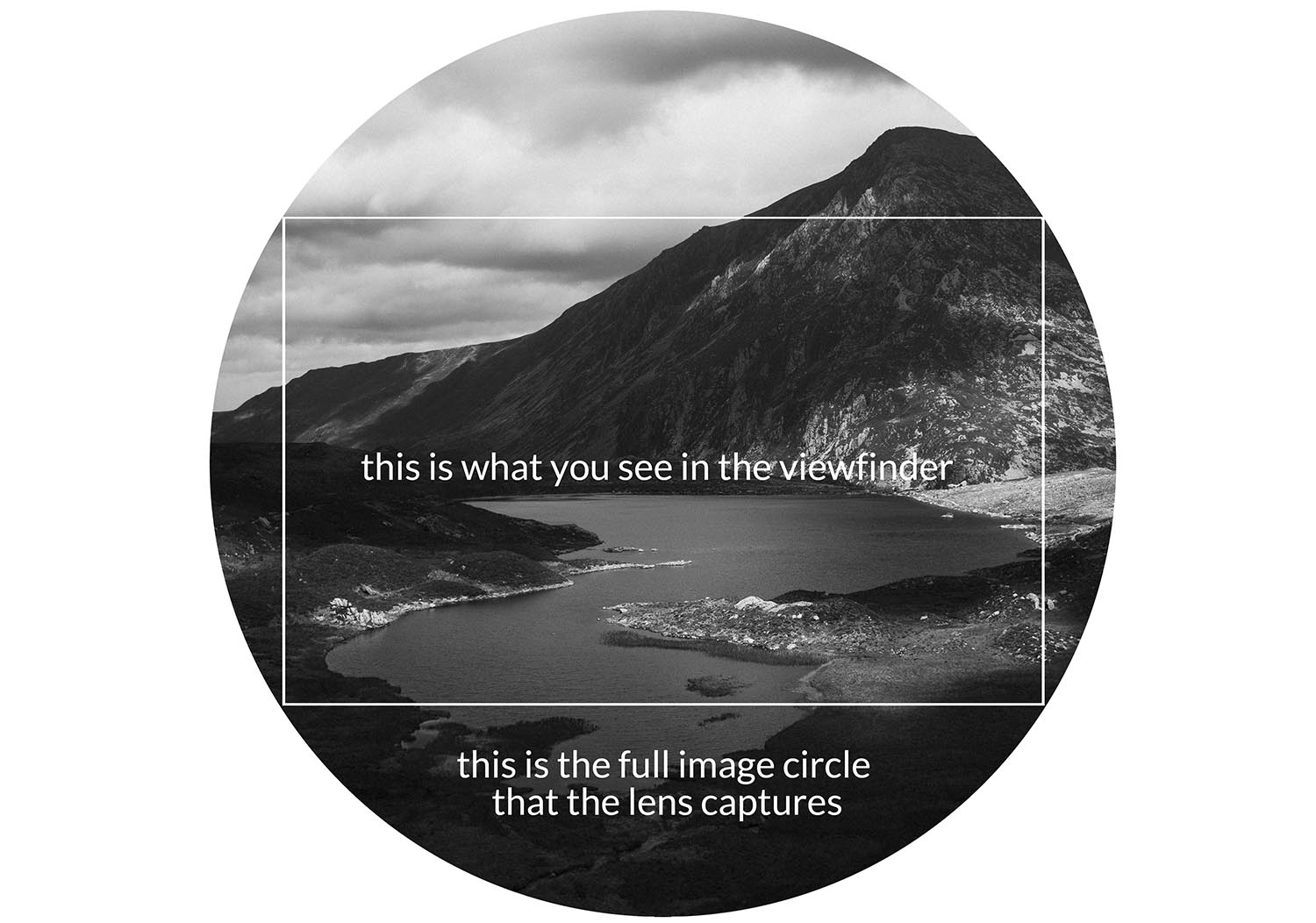
Knowing this then, the image circle of a circular fisheye lens lands entirely on the film or digital sensor.
It captures an image that will create the perfect circle images you may have seen before, like this:
 Which looks like this:
Which looks like this:
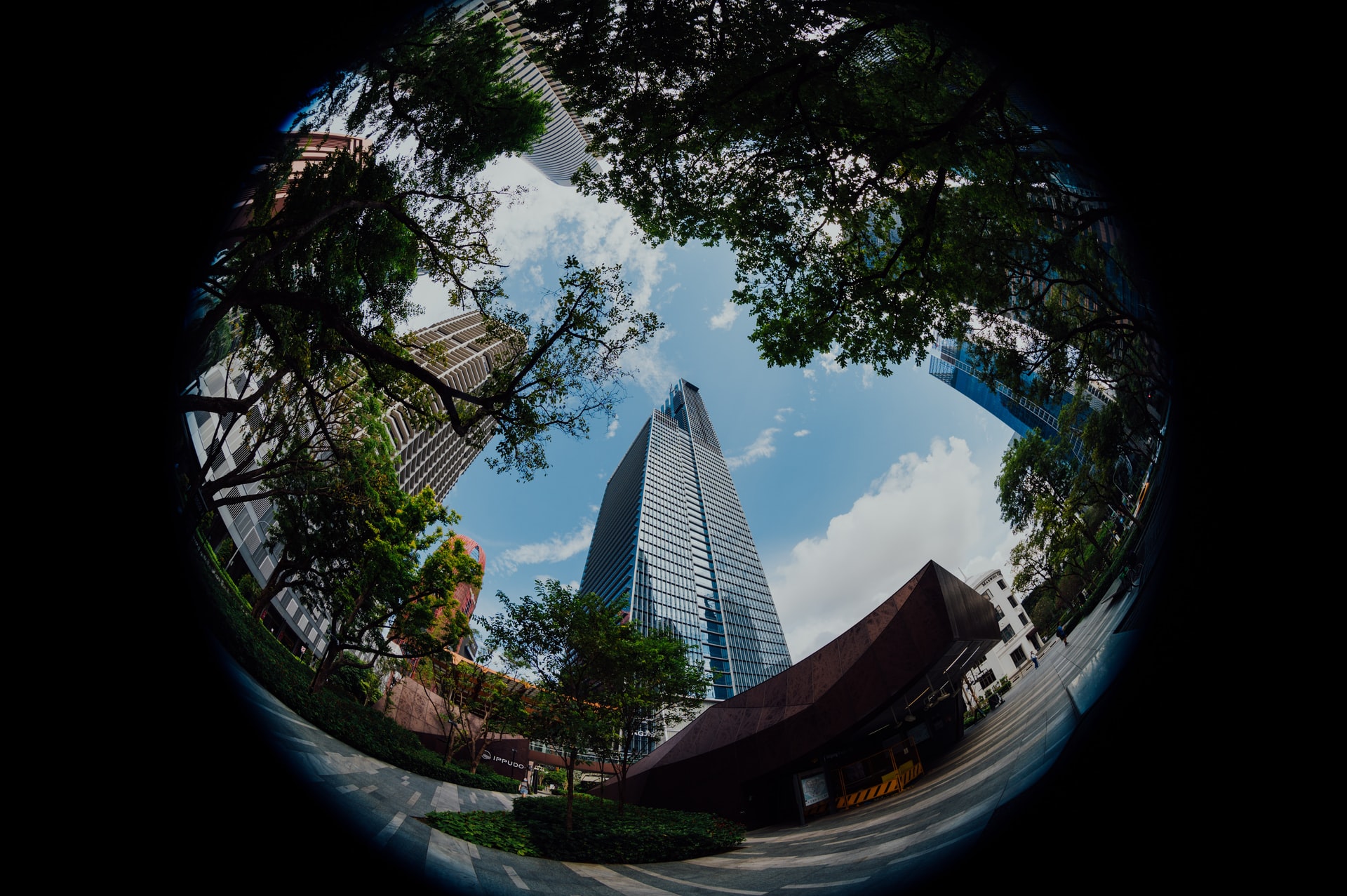
The image circle of a diagonal fisheye lens, or full-frame fisheye lens, however completely covers the film or digital sensor.
So it is effectively showing you a rectangular crop into the image circle.
This captures a non-circular photo, but one that is still very wide angle, like this:

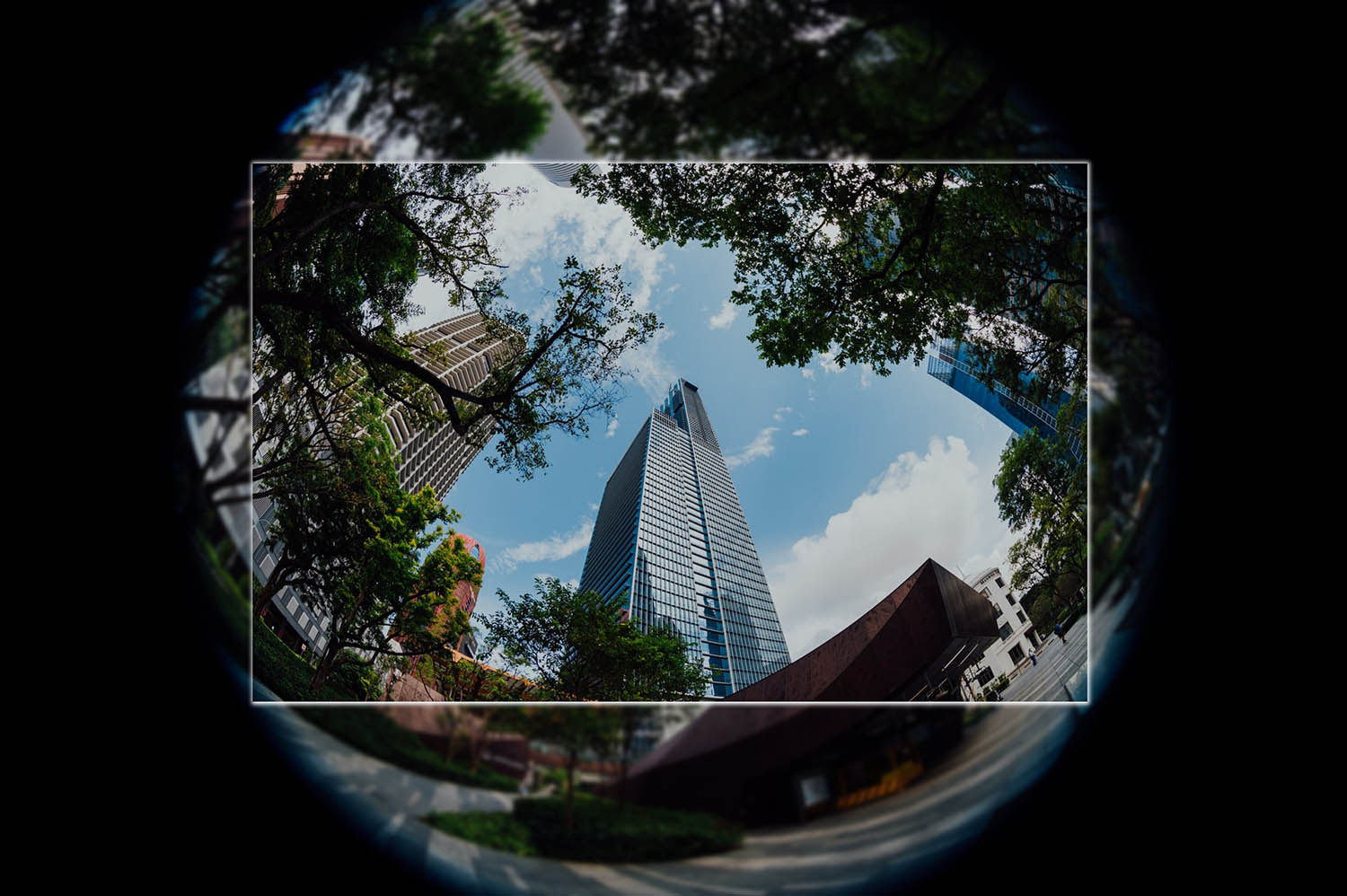

#1 Diagonal Fisheye Lens
It is also called “Full Frame Fisheyes”. When put to use, the effect is an image that has a normal, full-size rectangular shape. They produce image circles that are large enough to cover the entire image sensor.
In plain English – you take a picture and it comes out rectangular, like any other picture, just super wide angle.
When measured horizontally, the frame gives off a 180-degree viewing angle. Only the image periphery gets distorted. With a focal length of around 15mm on a full-frame camera and 10mm on an APS-C camera, this effect can be achieved.
They are called Full Frame Fisheyes because of the fact that they cover the entire frame. The sensor or image area is fully covered and circumscribed by the image circle.
Full Frame Fisheyes were manufactured in response to the growing popularity of fisheye lenses. Historically, Circular Lenses paved the way for the introduction of full-frame lenses.
As a result, the angle of view is 180 degrees when measured from end to end. The horizontal and vertical angles of view are smaller.
For instance, an equisolid angle of a 15 mm full-frame fisheye will measure 147 degrees horizontally and 94 degrees vertically.
#2 Circular Fisheye Lens
They produce a comparatively smaller image radius that fits within the borders of the image sensor. That way the end product is a circular image with a wider viewing angle measuring up to 180 degrees horizontally and vertically.
In plain English – you take a picture, and the whole image appears in a circle in the middle of the frame, the rest of the frame is black.
Circular Fisheye lenses were the very first of this kind of lenses to be manufactured. For this type of Fisheye Lens, the image circle is inscribed in the image sensor.
In some cases, some corners of the image frame are vignetted. This causes the tunnel vision effect, where the full scene seems to be contained in a circle.
Circular Fisheye Lens effects can be achieved at 8mm in focal length. This applies when you use a fisheye lens on a full-frame camera.
On an APS-C camera, you will need a focal length of 13 mm. This is applicable because this is the focal length equivalent of 35 mm. As such, adopting 8 mm as the focal length will not give you the circular fisheye effect you want.
What is a fisheye lens used for?
Fisheye Lens is used for a wide range of activities across different sectors:
- Planetariums make the use of fisheye lenses to project the night sky onto the dome. They also project other weather phenomena onto the dome to give people a good experience.
- Flight simulators in Aviation Schools make use of fisheye lenses to immerse pilots in simulation/training situations.
- Astronomers make use of fisheye lenses to get data on light pollution and observe cloud cover.
- Computer Graphic designers use fisheye lenses to create environment maps for rendering images in 3D and scenes in the virtual panorama.
- Weather stations make use of a fisheye lens in order to monitor and share current sky conditions. They can also share previous weather conditions with climatic indices like temperature, humidity, rainfall amounts, and wind.
- Photographers and Videographers use a fisheye lens to create a context in their work. It also enables them to get as close as possible to the subject and get action shots.
Recommended Fisheye Lenses for under £500
In the age of online shopping, heading out to your local camera shop to try out a variety of fisheye lenses just isn’t realistic. Heck even when photography was at it’s height in the high-street you’d still do well to find a camera shop that stocked more than one dedicated fisheye lens.
Thankfully, with retailers like Amazon, as long as you don’t damage the lens and send it back exactly as it came, the refund and return process is remarkably easy.
Here’s a list of the fisheye lenses I recommend you try:
Sigma 15mm f/2.8 Diagonal Fisheye lens – Autofocus

Samyang 8mm f/3.5 UMC Fish-eye CS II – Manual focus
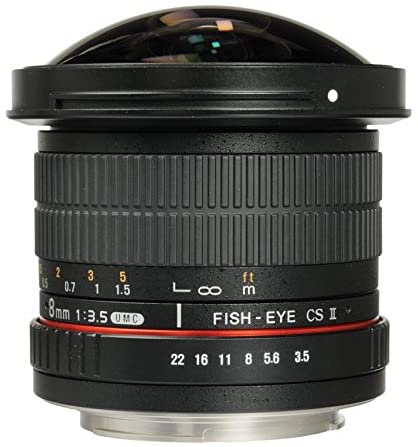
Samyang 12mm f/2.8 ED AS NCS Fish-eye – Manual focus
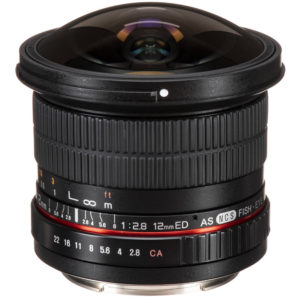
Samyang 14mm f/2.8 – Manual focus

Sigma & Samyang – Who are these brands? Can I trust them?
Yes you can trust them, Sigma is a Japanese lens manufacturer and has been in business since the 60’s and Samyang is a South Korean leas manufacturer who has been around sine the 70’s.
Third party lens makers have really upped their games in the last five years and regularly make lenses that outperform the more well known brands of Canon, Nikon and Sony.
I regularly buy Sigma lenses over Canon lenses to fit my cameras for example, they are half the price, focus faster and are much sharper. The last lens I bought was the Sigma 50mm f/1.4 and it’s easily faster at focussing that the Canon 50mm f/1.2, much, much sharper, and best of all, it’s half the price.
Why do you recommend these lenses?
If you want in depth reviews you can get stuck down a rabbit hole of technical details and charts, but I favour user experience over all else. Charts aren’t real life.
These lenses offer excellent build quality, sharpness and outstanding value for money.
Each of them comes in at under £500 and are roughly half the price of the equivalent Canon and Nikon lenses with no loss of quality.
How do fisheye lenses work?
Very simply, the more dome-like the shape of a lens, the more directions the lens can gather light from and effectively ‘see’. These lenses are bulbous, simply because they have to be.
Think of the eyes of predators vs the eyes of prey animals. Many fish have big, wide eyes on the sides of their heads, so they can see in all directions to watch out for things trying to eat them.
A bird of prey by contrast has small eyes on the front of it’s head, so it can laser into a target.
Think of it like wide angle lenses and zoom lenses. If you want to see the entire scene, you want to see like a fish, if you want to zoom in on a specific detail, you need to laser in on your target like a bird of prey.
Lens focal length is measured in millimetres (mm), any number lower than 24mm falls under the category of ultra wide angle lenses.
Remember – the sensor size of your camera affects what is considered ‘ultra wide angle’. The equivalent of a 15mm lens on an APS-C camera is approximately 8mm – don’t buy the wrong lens by mistake. If in doubt send me an email and I’ll send you a recommendation for your specific needs.
Fisheye lenses and distortion
As you can see from the images, the fisheye lens creates massive distortion at the edge of the frame.
This can be corrected to some degree in editing software such as Lightroom and photoshop, however the wider the lens, the more difficult this becomes to correct.
The best way to mitigate the distortion created by these lenses to remember these simple rules:
- The centre of the lens is less affected by wide angle distortion. Anything that you don’t want distorted, place it in the middle of the picture.
- The closer you are to an object, the more distorted it will appear.
- Creating a flat horizon for landscapes is possible, just make sure it is placed in the middle of the frame and perfectly level.
What can you use a fisheye lens for?
If you like the look of ultra wide angle lenses, then they can be used for any subject matter really.
More specifically, fisheye lenses make excellent travel lenses as they allow for ultra wide images of landscapes and can focus short distances to still allow you to fill the frame with detail shots. They are also typically ‘fast’ lenses, which means they have wide apertures and can gather a lot of light. This makes them great for taking pictures indoors in places such as museums and churches.
Of course, if you’re into extreme sports such as Deepsea diving, skateboarding or surfing, then the fisheye is a must have for capturing up close and personal action.
Images of the entire night sky are a walk in the park for a fisheye lens, the extreme wide angle that it can capture means you can photograph pictures of the entire milky way and with some lenses, the entire night sky from horizon to horizon.
If you are an experienced landscape photographer or an extreme sports junky, a veteran or beginner, the fisheye lens may be just the creative kick you’re looking for.
Big disadvantages of the fisheye lens
Landscape photographers employ filters to alter exposure and colour of the scene. Typically these filters are either screwed on to the end of the lens or held in place by a filter holder, which allows plastic square filters to be placed in front of the lens. With fisheye lenses however, the glass is so big and bulbous that filters won’t fit on them.
There are solutions to this problem, but typically none as convenient as conventional filters.
The easiest solution is to use a tripod and bracket your exposures, this way you can combine your images in photoshop later on to make sure you have a correct exposure for the land and sky.
Fisheye lens for the iPhone and smartphone
Lens adapters are available for your mobile phone to give you that ultra wide angle lens on the go.
Typically they clip on to the edge of the phone and sit over your existing iPhone camera lens. Different adapters are available for different needs and are available for different phones.
Check out the latest prices on Amazon here.
